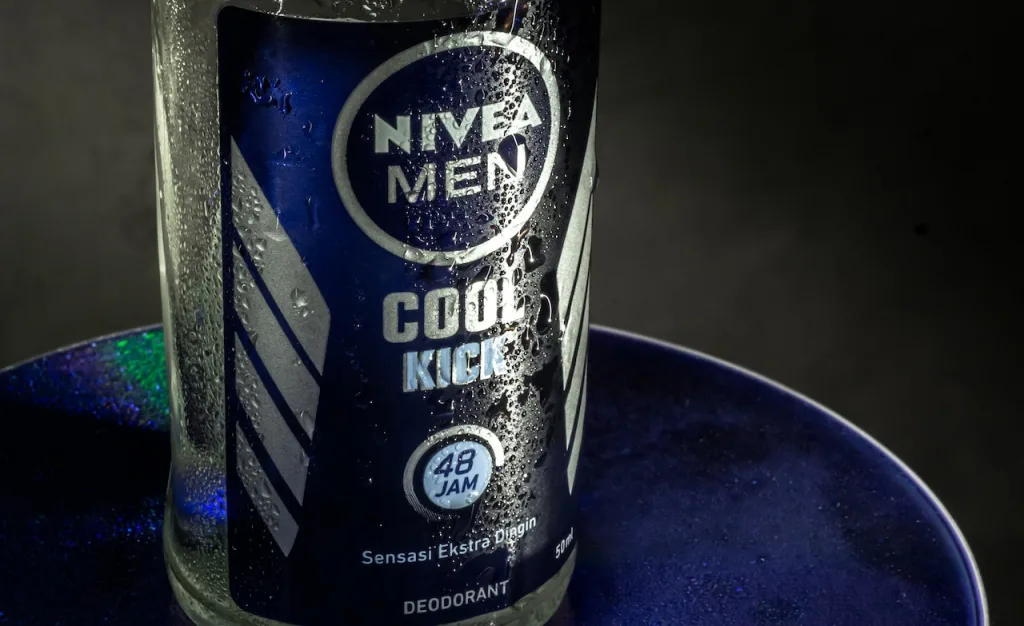Last Updated on September 18, 2023 by Ecologica Life
In 2023 it is forecast that there will be 304 million deodorant consumers in America. Many people around the world use deodorant every day. It is therefore worth considering, which type of deodorant is better for the environment, spray, roll-on, or stick?
Table of Contents
Evaluation Criteria
To assess the environmental impact, we will look at three factors:
1. Packaging & end-of-life (disposal)
2. Ingredients
3. Manufacturing process
When we were writing this article, we also wanted to write about which type of deodorant might be better for your health. However, to keep this article short, we will look at toxins in deodorants and their effect on human health in another article.
Packaging & End-of-Life (Disposal)
Packaging is often the first thing we notice when choosing a product. It also has a significant environmental impact.
Spray Deodorant
Spray deodorants are commonly housed in aerosol cans, which are typically made from a mixture of aluminium, steel, and plastic components.
The main problem with aerosol cans is that they are difficult to recycle due to this mixture of materials.
What’s more, some local recycling programmes do not accept aerosol cans because they can explode under certain conditions, posing a safety risk. As a result, these cans often end up in landfills.
The complex structure of aerosol cans makes them difficult to recycle. Most aerosol cans contain residual propellant and deodorant that must be safely removed before the metals can be recycled.
In many localities, aerosol cans are classified as hazardous waste. This means that they cannot be disposed of through regular recycling and instead require special disposal methods.
Roll-on Deodorant

Roll-on deodorants usually come in plastic or glass bottles with a plastic rollerball applicator. Although plastic is technically recyclable, the reality is that only a small percentage of plastic waste is actually recycled.
According to the Environmental Protection Agency, only about 9% of plastic waste was recycled in the United States in 2018. The majority ends up in landfills or, worse, the ocean.
Plus, the rollerball mechanism is usually made up of multiple materials, making it difficult to recycle effectively.
Stick Deodorant
Stick deodorants are commonly found in plastic twist-up containers, like roll-ons. However, there’s a growing trend towards more eco-friendly packaging options. These can include biodegradable cardboard tubes, paper wraps, or reusable metal containers.
These alternatives can be composted or refilled, significantly reducing their environmental impact.
Some brands also offer refillable stick deodorant containers made of metal or glass, further reducing waste.
Packaging & End-of-Life Verdict
Based on the typical materials used and the recycling challenges, stick deodorants appear to have a more promising environmental profile. This is especially true of those housed in biodegradable or reusable packaging.
Spray deodorants are the least eco-friendly due to the mixed materials in aerosol cans and the challenges of recycling them. They have the least environmentally friendly disposal process, often requiring special disposal methods due to their hazardous nature.
Roll-on options fall short due to low recycling rates and the complexity of their packaging. There is potential for improvement if brands transition to more sustainable packaging options.
Ingredients: What’s Inside Matters
Spray Deodorant
Spray deodorants often contain volatile organic compounds (VOCs) such as propane or butane to propel the spray. These VOCs contribute to air pollution and can be harmful to both the environment and human health.
Sprays may also contain artificial fragrances and chemicals that can be water pollutants when washed off.
Roll-on Deodorant
Roll-on deodorants are generally water or alcohol based. While these ingredients are less harmful to the environment than VOCs, the production of alcohol can be resource intensive.
They may also contain synthetic fragrances, preservatives, and emulsifiers that end up going down the drain when you clean yourself. This can harm aquatic ecosystems.
Stick Deodorant
The ingredients in stick deodorants vary widely. They usually contain a solid form of alcohol, wax, and active ingredients to combat odour. Some brands are making efforts to source natural and organic ingredients such as baking soda, cornstarch, and essential oils, which are generally considered to be more environmentally friendly.
Ingredients Verdict
For a greener choice, try natural or organic stick deodorants with sustainable and less harmful ingredients.
Roll-on deodorants are generally less harmful than sprays but may still contain ingredients that are not ideal for the environment.
Spray deodorants are the least environmentally friendly due to the presence of VOCs and other potentially harmful chemicals.
Manufacturing Process
Spray Deodorant
The manufacturing of spray deodorants is energy-intensive, primarily because it involves the compression of gases used as propellants.
This compression process uses more electricity compared to manufacturing roll-on or stick deodorants.
Roll-on Deodorant
Compared to sprays, roll-on deodorants generally have a less energy-intensive manufacturing process. The main steps involve mixing the liquid ingredients and sterilising the rollerball applicator, which are relatively straightforward and consume less energy.
However, the production of the plastic bottle and rollerball can be energy intensive, depending on the materials used.
Stick Deodorant
The energy use in stick deodorant manufacturing varies depending on the complexity of the formula and the sourcing of the ingredients.
Making the wax or gel base can be energy consuming. This is especially true if their components are synthesised from non-renewable resources such as petroleum.
On the flip side, natural and organic brands often have simpler manufacturing processes that are less harmful to the environment.
The Verdict on Manufacturing
In terms of the manufacturing process, roll-ons seem to have a slightly smaller environmental footprint due to their less energy-intensive production methods.
Spray deodorants are the least environmentally friendly due to the energy required for gas compression and the use of VOCs. Stick deodorants fall in between, with their environmental impact largely depending on the specific brand and the ingredients used.
The Bottom Line

Our research shows that stick deodorants are the greenest option, but it depends on the brand. Choose organic or natural stick deodorants with biodegradable or reusable packaging. This will ensure that less plastic pollution ends up in the environment. It also reduces the likelihood of you and the environment being exposed to toxic chemicals.
We advise our readers to do their own research on the brands they typically use and go from there.
Credit: cottonbro studio/Pexels








